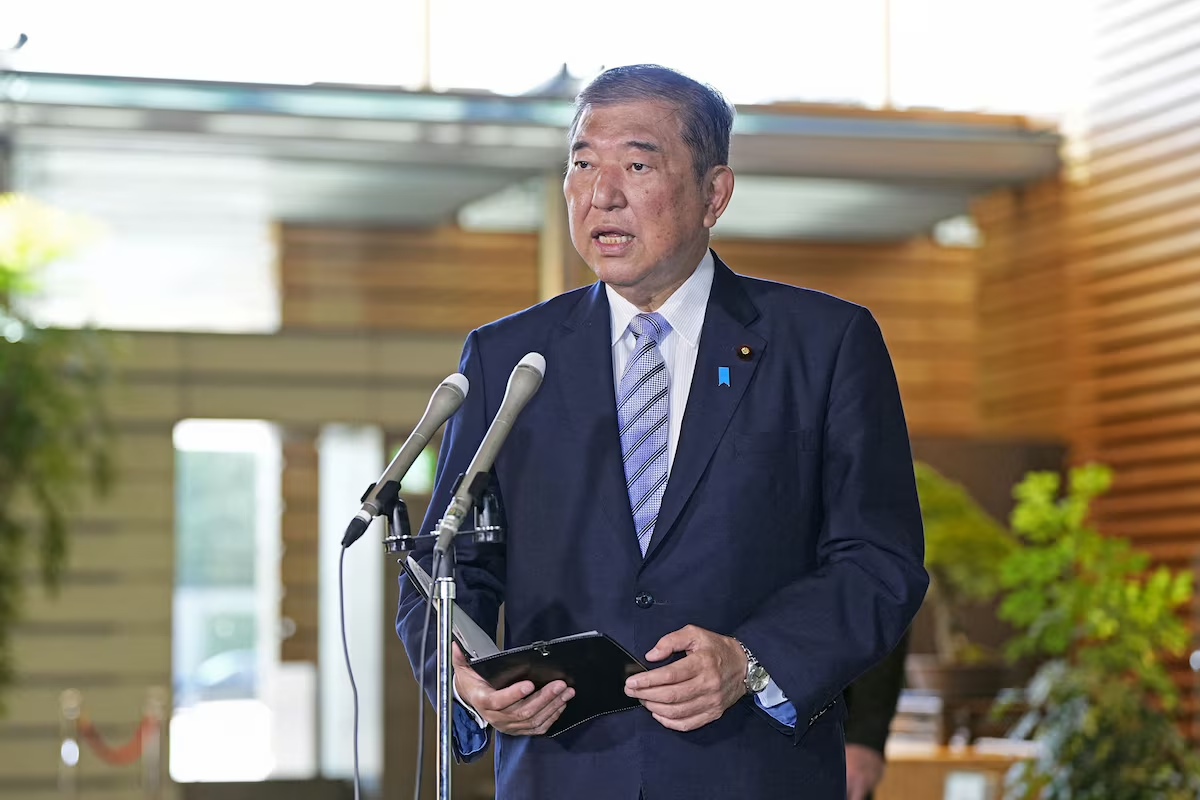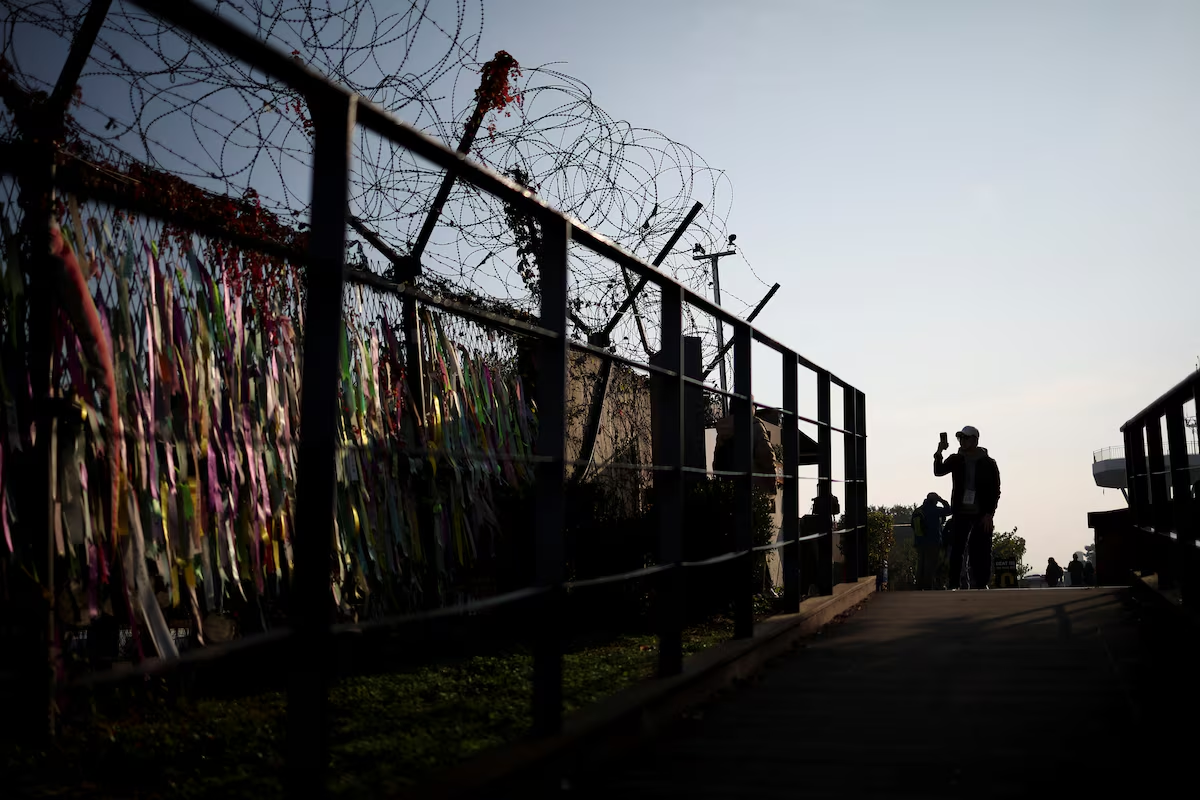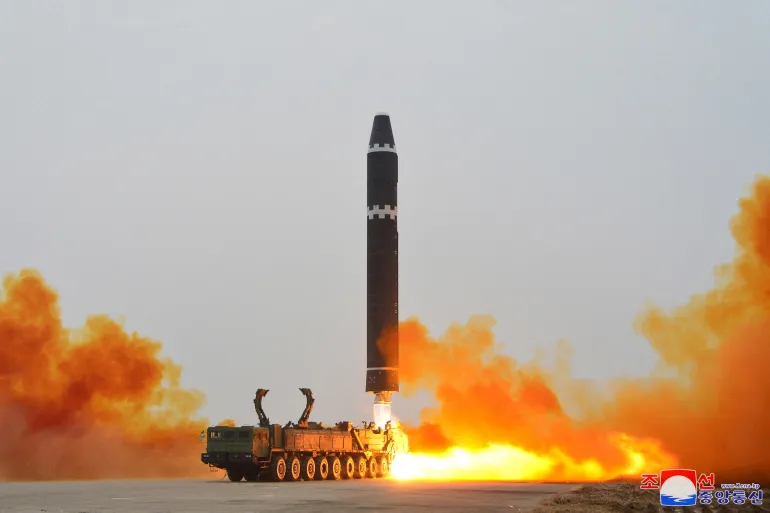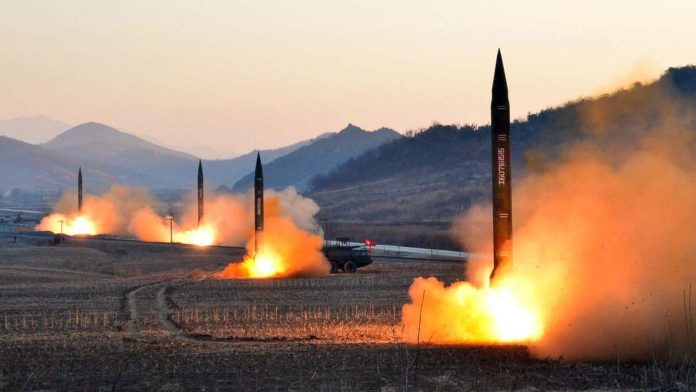North Korea’s ICBM Test Raises Alarm: Concerns Mount Over Possible Russia-North Korea Military Alliance
On Thursday, North Korea announced a test of what it claims is an upgraded intercontinental ballistic missile (ICBM), referred to as the “world’s most powerful strategic weapon.” The latest show of force, overseen by North Korean leader Kim Jong Un, is being viewed as a response to what Pyongyang sees as hostile actions by its adversaries, particularly the U.S. and its allies in East Asia. This latest ICBM launch has not only drawn condemnation from South Korea, Japan, and the U.S. but also escalated regional and global concerns amid speculation that Russia may be aiding North Korea’s missile advancements in exchange for support in Ukraine.
According to North Korea’s state-run media agency, KCNA, Kim Jong Un viewed the ICBM test as a powerful statement directed toward the country’s perceived enemies. KCNA reported that Kim declared the launch a “warning” against what he described as threats to North Korea’s security. He was quoted as saying, “The test-fire is an appropriate military action that fully meets the purpose of informing the rivals, who have intentionally escalated the regional situation and posed a threat to the security of our Republic recently, of our counteraction will.”
This provocative act comes amid international outcry over North Korea’s decision to deploy 11,000 troops to Russia, with 3,000 of these soldiers reportedly stationed near the western frontlines in Ukraine. Although neither Moscow nor Pyongyang has officially confirmed this deployment, the reports have stirred alarm within the U.S., Japan, and South Korea, with concerns growing over potential military cooperation and technological exchanges between Russia and North Korea.

ICBM Technology and the Alleged Russia-North Korea Connection
The new missile test follows recent warnings from South Korea about the possibility of North Korea conducting a nuclear test or an ICBM launch around the U.S. presidential election on Tuesday. Experts believe that Pyongyang might be attempting to leverage the situation to showcase its military might, potentially influencing U.S. policy and demonstrating its ability to pose a direct threat.
Shin Seung-ki, head of research on North Korean military affairs at the Korea Institute for Defense Analyses, indicated that North Korea’s recent test likely focused on assessing enhanced booster performance, possibly achieved with assistance from Russia. According to Shin, “North Korea will want to keep getting help like this, because it saves time and costs while improving performance and upgrading the stability of weapons systems.” This potential collaboration could significantly accelerate North Korea’s missile development, enabling Pyongyang to produce advanced and reliable ICBMs at a much faster pace.
Given North Korea’s history of aggressively pursuing missile advancements, this collaboration could present a notable shift in the region’s security dynamics, especially if North Korea receives technology that allows it to further develop ICBMs, tactical nuclear weapons, or ballistic missile submarines. Some experts suggest that North Korea’s strategic aims include demonstrating defiance against international pressures, as well as showing its resilience in the face of sanctions and growing geopolitical isolation.
Thursday’s launch was reported as North Korea’s longest ballistic missile test to date, lasting a record 87 minutes, according to South Korean authorities. The missile, launched from near Pyongyang, reached an altitude of 7,000 kilometers and traveled 1,000 kilometers before splashing down approximately 200 kilometers west of Japan’s Okushiri Island, near Hokkaido.

The missile was launched on a lofted trajectory, a maneuver used to test propulsion and stability over shorter distances to avoid the political fallout that could arise from sending a missile further out into the Pacific. The choice of a lofted trajectory also serves as a warning, as a similar missile fired on a standard trajectory could have the capability to reach much greater distances, including areas within the continental United States.
The test follows North Korea’s last ICBM launch in December 2022, involving the Hwasong-18, a solid-propellant missile capable of reaching 15,000 kilometers. This range places almost the entire U.S. mainland within Pyongyang’s theoretical strike radius. The Hwasong-18 was fired at a sharply lofted angle and traveled for 73 minutes, setting a record flight duration before Thursday’s test.
This missile launch comes on the heels of meetings between U.S. Secretary of Defense Lloyd Austin and South Korean Defense Minister Kim Yong-hyun, who condemned North Korea’s alleged deployment of troops to Russia as part of its military campaign in Ukraine. While Russia and North Korea have yet to officially acknowledge these deployments, Russia’s U.N. Ambassador Vassily Nebenzia raised questions regarding the opposition to Pyongyang’s support for Moscow, citing the West’s support for Ukraine as a justification for such alliances.
South Korea views North Korea’s military involvement in Russia as a direct security threat, warning that North Korea could gain critical combat experience in modern warfare. South Korean officials have also expressed concerns that Russia could reward North Korea with advanced military technologies, such as tactical nuclear weapons, reconnaissance satellite capabilities, and enhanced ballistic missile systems.
The potential for such a transfer of technology presents a significant escalation in the arms capabilities of North Korea and could shift the power balance in the region. These advancements would allow North Korea to strengthen its nuclear deterrent, expand its strategic influence, and enhance its ability to retaliate against perceived threats from the U.S. and its allies.
Japan, the U.S., and South Korea reacted strongly to the missile launch, denouncing it as a violation of U.N. Security Council resolutions and a destabilizing act that increases tensions in the Asia-Pacific region. In Tokyo, Japanese Defense Minister Minoru Kihara stated that Japan is actively coordinating with its allies to monitor North Korea’s missile developments, adding that his government will continue to take necessary actions to protect Japanese territory and its citizens.
The U.S. has also reinforced its commitment to defend its allies in the region. Secretary Austin underscored that the U.S. military will stand by South Korea and Japan, countering any potential threats from North Korea. “Our commitment to the defense of the Republic of Korea remains ironclad,” Austin said, emphasizing the importance of deterrence in maintaining stability.
South Korea’s intelligence agencies, meanwhile, are closely analyzing the missile test and preparing for potential further provocations from Pyongyang. The recent ICBM test has heightened the urgency for South Korea to bolster its own missile defenses and consider alternative strategies, including joint military exercises with the U.S. aimed at countering North Korea’s missile capabilities.
For North Korea, these tests are not only about deterrence; they also serve as powerful political statements that highlight the country’s technological progress and its determination to assert its presence on the global stage. While North Korea’s missiles are ostensibly aimed at safeguarding national security, they also symbolize Pyongyang’s pursuit of recognition and influence in international affairs.

North Korea’s focus on ICBM development indicates a strategic shift toward leveraging missile capabilities as bargaining chips in future negotiations. By showcasing its missile capabilities, North Korea may be seeking to draw international attention and position itself as a critical player in global security dialogues.
North Korea’s latest ICBM test underscores the increasing complexity of the security landscape in the Asia-Pacific region. The prospect of technological exchanges between North Korea and Russia poses a serious challenge for the U.S., Japan, and South Korea. If Russia and North Korea indeed forge a military partnership, the security balance could be altered, with Pyongyang gaining advanced missile technology and combat experience.
As North Korea continues to flex its military muscle, regional powers and international organizations must weigh their responses carefully. The potential for a new Cold War-era dynamic, with proxy conflicts and power struggles, looms large. The world is watching closely, as North Korea’s pursuit of advanced ICBMs and its potential collaboration with Russia raise urgent questions about the future of global peace and stability.




